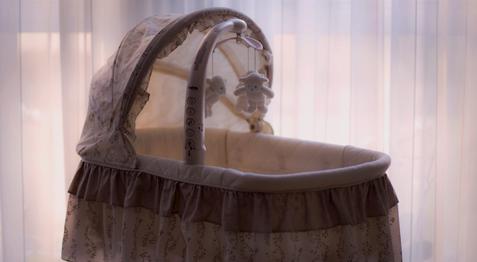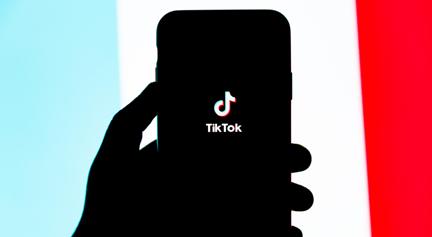
7 minute read
OPINIONS
from Volume 83. Issue 7
by the-Fulcrum
Seeing the world with TikTok brain SHORTER CONTENT IS CHANGING THE WAY WE ENGAGE WITH THE WORLD
Even if you delete TikTok from your phone, you won’t be able to escape the model of content that TikTok has ushered into the entertainment world. The short 15-second to three-minute videos are mind-numbingly addictive, and can now be found on other social media platforms through Instagram’s reels and Youtube’s shorts features.
Advertisement

This type of content will glue you to your phone for hours on end, capitalizing off short attention spans. TikTok’s algorithm personalizes your feed so that the content you see is directly related to your own interests, as identified by the app. It doesn’t require you to seek out your own interests — the app’s advanced algorithms finds it for you.
Nevertheless, the popularity of this content style isn’t surprising given its profitable model for both social media companies and entertainment services. By keeping content short and sweet, advertisement companies are able to promote more products with higher levels of engagement than they were previously.
But what does this mean about the way we engage with the world around us?
Initially, I thought the criticism of social media platforms like TikTok was just a moral panic — not unlike previous generations’ criticism of television for supposedly damaging human brains. However, TikTok content is unlike any other media because of how fast the content is produced, personalized, and viewed by users.
What’s the point of watching a politician’s entire speech when TikTok offers a short clip that slices it into 10-second fragments over a funny sound?
Likewise, instead of watching a 30-minute T.V. show, it’s more entertaining to watch 30 one-minute clips on Instagram reels, where we know each video will be aligned to our specific interests, due to the algo- rithm. As we deviate towards quick and easily consumable content, our experience of the world seems to become a bunch of fragments which are absent of any nuance. We search for entertainment that immediately entertains us, and we begin valuing the quantity of content over its quality. And with our constant engagement with the algorithm, we let ourselves consume only what we think is comfortable. We essentially lose the ability to engage with content
Having children is not a woman’s moral imperative
MORE AND MORE WOMEN CHOOSING TO BE CHILD-FREE — AND THAT’S OKAY.
When J.D Vance labelled Alexandria Ocasio-Cortez and other democrat politicians as “childless cat ladies,” I was reminded of how terrified I was of the negative connotations associated with being unmarried and childless.
Vance’s description reminded me that having children has never just been a personal
Opinions Editor
Matthew McConkey opinions@thefulcrum.ca
which we might not particularly like; content which often widens our perspective of the world. When our minds are accustomed to engaging with short content, it becomes difficult to remain interested in longform media like books, journals, or even movies. This long-form media often elaborates on subject matter and gives consumers the space to think more critically about what they are consuming. There is a peace of mind that comes with slowing down our media consumption.
Although platforms like TikTok can be used for social good because of their ability to transmit messages quickly, we need to be careful about how much we use it and how it defines our worldly perspective. If we only see the world through short bites of content in algorithms that only confirm what we already know, we can lose our ability to critically think and see the world how it really is.
decision — it’s a political one, too. Being child-free comes with stigma and shame, weaponized because it challenges the notion that a woman’s role inherently involves child-rearing.
Like many women, having children seemed like something that would naturally happen in my life, rather than it being a choice I would eventually make. However, as I got older, I began to have conversations with other millennial and Gen Z women — many of whom shared the sentiment that they had no desire to become mothers. It eventually hit me: I had a choice of whether or not to pursue motherhood. There are hidden social pressures which made me forget that having children was not my moral imperative. As work and education opportunities continue to become increasingly available for women, much of the world is starting to recognize that women have much to offer outside of the domestic sphere. Fertility rates are declining, and more women are choosing not to have children. And while some traditionalists may fear these trends as a reflection of the breakdown of the nuclear family, this points to the increased freedom of choice for many women worldwide. People frequently claim that we have achieved gender equality in countries, granting women formal access to legal and political freedoms. However, we forget that most oppressive systems don’t go away — they persist through oppressive social norms and unpaid labour.
Parenthood is oftentimes more stressful for women, as they tend to take on more chores than their partners in heterosexual couples, even when both partners par- ticipate in the workforce. Furthermore, women also take on more cognitive labour; that is, they are expected to do more planning, managing emotional conflicts, and caring for their children than their male partners. This type of labour is diffi- cult to measure because it is psychological in nature. Nevertheless, the negative impact on women is clear, as mothers typically end up more stressed than fathers during childcare. Considering how women might have to make disproportionate sacrifices for both their children and partner, is it really fair to shame women for opting out of motherhood? Not just that, but not all women naturally want children. We stigmatize menopause and those who are unable to conceive because we reduce
GRWM to unpack the obsession with GRWM videos
A NEW TREND OR A TWIST ON AN OLD FAVOURITE?
“Hey guys, get ready with me while I update you on my life!”
Does that line sound vaguely familiar to you? If you’re on TikTok, there’s a strong chance that it does.
These stem from a growing genre aptly named “Get Ready With Me” (GRWM). Popularized from the beauty community and skincare side of the app, GRWM’s show an influencer going through their daily skincare, makeup, or morning routine while they talk about themselves. This is often done while showcasing some of their favourite or newly bought products, which they use throughout the video.
If you search GRWM on TikTok, you will find millions of these videos, with some of them receiving millions of likes. However, these videos seem so mundane — so why are they popular?
The first piece of understanding this trend is to note that this is not a new thing. There has always been some version of an influencer filming themselves and taking viewers through their day. This became really popular on YouTube during the early 2010’s. Vlogging and story time YouTubers seemed to grow hand in hand, with influencers like Tana Mongeau, Gabbie Hanna, and others at the forefront of the trend. Videos about daily makeup routines, de-cluttering, and just general life vlogs began to flood the YouTube recommended page. Another important aspect of these videos came from the rapid growth of the online beauty community — this introduced a consumeristic appeal. Massive “haul” videos and reviews became popular, leading to the growth of beauty influencers like James Charles. These influencers would review makeup on a consistent basis, leading to huge amounts of inventory, which they would eventually use for other types of content (often de-cluttering and best or worst a woman’s contribution to the world with an argument of biological essentialism — that our natural and moral purpose is to reproduce.
While raising a family can be fulfilling to many people, women can seek fulfillment from their work, their communities, and generally a life that doesn’t include children. For many women, deciding to be childfree means prioritizing their happiness and well-being before sacrificing themselves to the hardships of parenthood. The idea that a woman’s happiness ultimately lies in having children implies that we are naturally inclined to find joy in taking care of others. Although this can be true for some, it is also untrue for others, and these social norms often restrict our freedoms. Instead of shaming women for choosing to be childfree, why don’t we redirect our energy into making parenthood a more fair experience for everyone? Men need to reconsider their learned roles in the domestic sphere, and as a society, we need to continue addressing the psychological and physical needs of mothers everywhere. So whether or not you want children of your own, let’s stop dictating when a woman should have children, or whether she even should in the first place. product videos).
This trend eventually made its way to Instagram, where short-form versions of these videos flourished, indicating that there is a demand for short-form vlogs. Shortly after, TikTok came along; the peak of short-form video content. Although dances, thirst traps, and other trends ruled the platform initially — GRWM’s eventually came to claim their own little corner.
GRWM’s are an interesting mesh of both the short-form content and product reviews that were so popular on Youtube. Instead of watching a 10-minute video of someone reviewing makeup while updating on their life, it can be done in one minute. You can get the punchy stories of Karens taking over the workplace while also getting advice on what eye cream you need to get rid of your under-eye circles. What more do you need when you’re scrolling?
There is also a parasocial relationship created with these TikTok influencers. Unlike celebrities, these influences could be your friend; thus, there is an idea that viewers can trust what they say — especially if these influencers overshare some of their life details.
During COVID-19, there was a boom in e-commerce. Everyone was buying online, and the skincare and haircare industries benefitted greatly from this. This focus on the beauty world combined with everyone’s desire to improve skin health led to a sudden rise of skincare content on TikTok. And these skincare videos presented themselves in the form of GRWM videos.
So what does this mean for the future of GRWM videos?
Right now, we’re seeing a trend on de-influencing — pushing back against the consumerist interest in these videos. Despite this, I don’t think these videos will be going anywhere anytime soon. For one reason or another, we are drawn to these influencers. We want to learn more about them, what they do, and how they look the way they do. Add to this our collective fascination with getting the newest thing, and you have a trend that will outlast whatever platform it finds itself on next.



